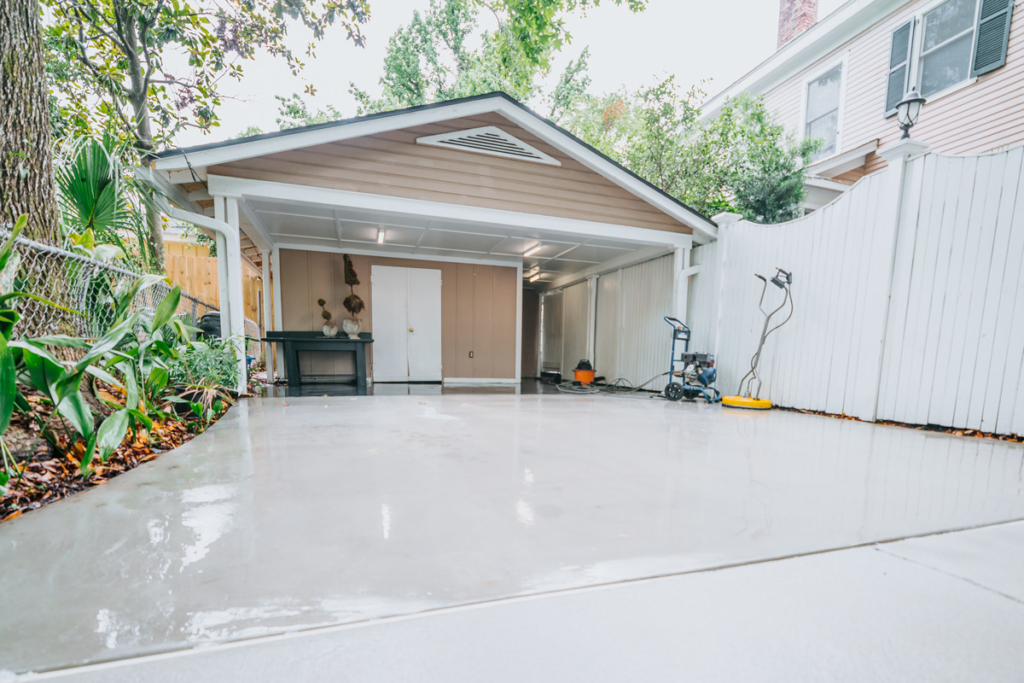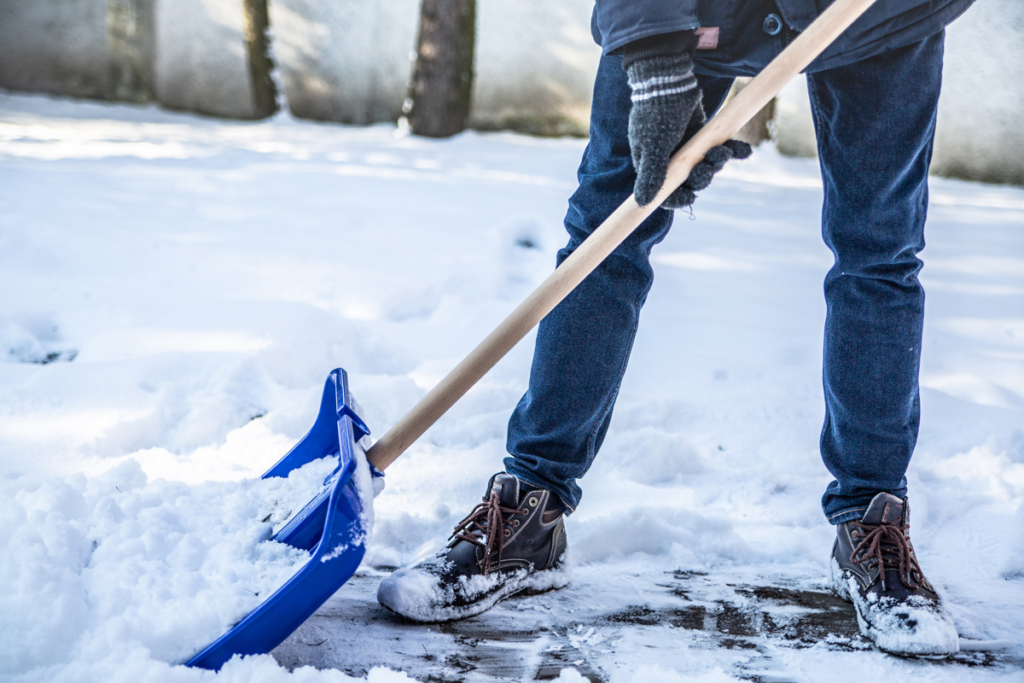Residential Concrete Maintenance

May/31/22
Concrete is a very durable and reliable material for driveways and patios. It also requires very little maintenance to keep it looking great. But to keep it in the best shape possible for years to come, there are a few key steps to maintaining and cleaning your concrete that you’ll want to follow. Adopting these tips will not only help you save money, but you’ll also be able to maintain the look and finish of your concrete while ensuring a long life for your investment.
Regularly Clean Your Concrete
Yes, it’s incredibly durable, but concrete isn’t unaffected by high foot and vehicle traffic. It’s a great idea to make sure you’re cleaning your conctrete regularly to ensure nothing is wearing away at the seal or scraping the surface enough to lead to chips or cracks. While most sealers help protect concrete from absorbing stains, if you see oil, gasoline, grease and other spills on the concrete, it’s always a great idea to clean it as soon as possible. These liquids and chemicals can not only cause discoloring but can also wear away your concrete sealer, leading to more and more deterioration.
Re-Seal Your Concrete
Most professionals recommended that you re-seal your concrete every two years, or sooner if you notice wear beginning to show. Investing in a high-quality sealer protects your pour and maintains the original look of your concrete. There are generally two types of sealers with important differences to each.
A wet-look sealer is great for protection from grease and oils and is less expensive compared to other types of sealers. However, it does require more frequent applications. It also creates a film on the surface of your driveway—producing it’s characteristic “wet” look.
A dry-look sealer does not discolor your concrete. It penetrates your concrete, seeping in and providing protection that lasts longer (up to ten years, depending on use and weather conditions). Because of its longer durability, a dry-look seal typically costs more than wet-look seals.

Avoid Deicing Chemicals
Many deicing chemicals used in the winter can cause surface damage. This is due to the freezing and thawing moisture cycles the chemicals cause. Look out for products that contain ammonium nitrates and ammonium sulphates—they are particularly harmful as they attach concrete chemically. Common rock salt (sodium chloride or calcium chloride) used on slippery walk and drive ways causes less damage to concrete, but is damaging to metal (cars or home materials) and vegetation (gardens or grass). It’s always a good idea to avoid any deicers the first winter after a driveway or walkway has been poured since new concrete is more susceptible to salts. A good alternative for this first year is laying down sand on slippery surfaces to create traction.
Don’t Scrape Your Concrete
Speaking of winter, there’s another culprit to your concrete that can cause damage and dramatically shorten the life of your pour. Be very careful when you are plowing or shoveling snow off of your driveway. Using metal shovels or plows that have metal blades can scratch and scrape the surface of your driveway, breaking the seal and allowing moisture—especially in winter months— to seep below the surface and create cracks as it freezes and thaws.

Clear Roots Around Your Concrete
Experts recommend preventing cracks before they happen by removing shrubs and trees close to concrete pours as you begin a project. The roots can grow under and push up against your new concrete causing cracks and damage over time. If you’d like to keep your plants, you can also trim roots near your concrete—keeping other roots that are growing away from your pour.
Limit Weight on Your Concrete
Residential concrete pours are not designed to withstand the weight of very heavy machinery. If there is a job at your home, make sure that the heavy equipment can stay on the road or off the driveway. It’s also important to note that residential pours generally don’t reach full strength for at least thirty days after they’ve been installed. If you’re having work done on your home, plan your concrete as a last step if possible, or make sure that heavy machinery can stay on a street or other surface during construction.
Following these tips with your new concrete will ensure you get years of wear out of your investment. If you’re unsure how to best protect your new pour, it’s always a great idea to talk to your contractor and ask them what they’d recommend for a maintenance schedule.